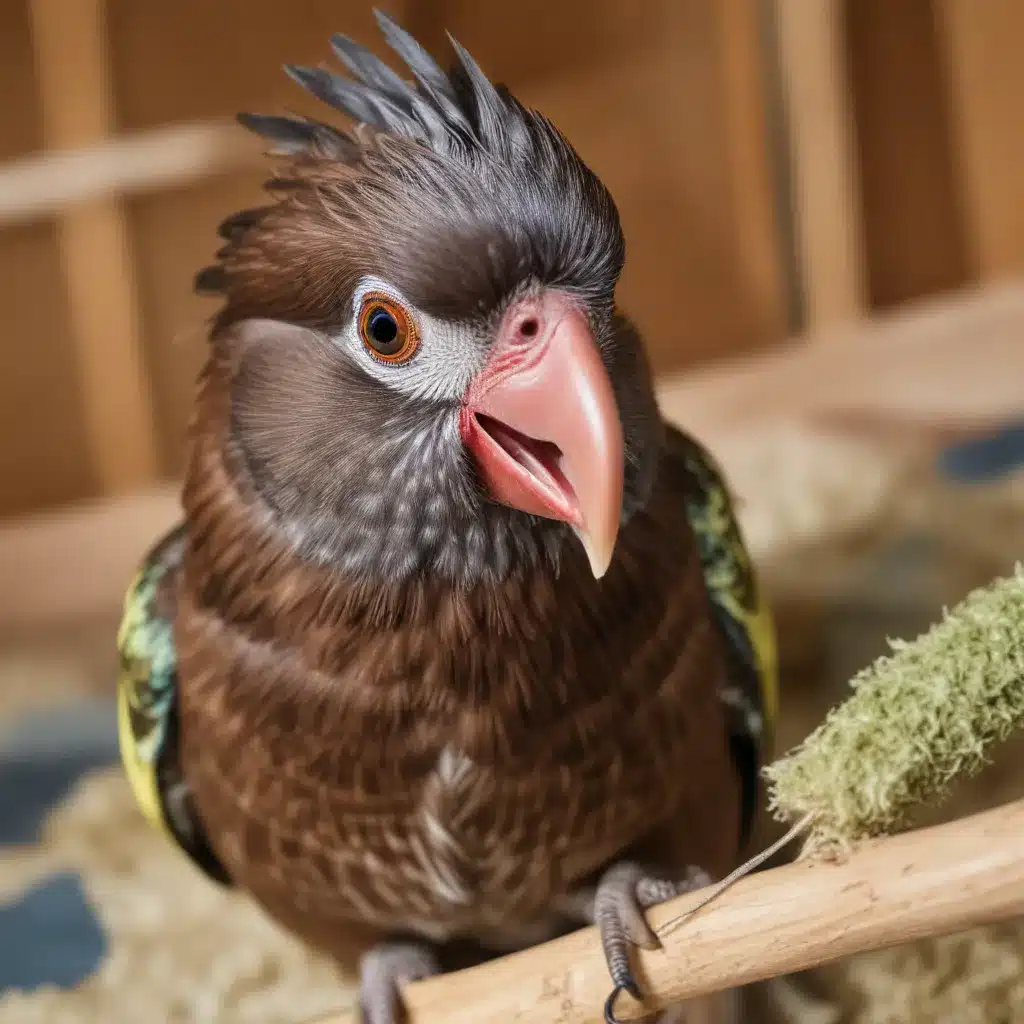
Avian Well-being Essentials
As an experienced avian caretaker, I’ve learned that ensuring the overall well-being of our feathered friends is essential for establishing a positive training environment. Let’s explore the key physiological, behavioral, and habitat considerations that contribute to a stress-free experience for both you and your avian companion.
Physiological Needs of Birds
Birds have unique physical and biological requirements that must be met to maintain optimal health and minimize stress. Proper nutrition, appropriate housing, and regular veterinary care are critical foundations. Provide a varied, nutritious diet that caters to your bird’s species-specific needs, and work closely with an avian veterinarian to develop a preventive care plan. Regular check-ups and prompt attention to any medical concerns can go a long way in supporting your bird’s well-being.
Behavioral Enrichment for Feathered Friends
In addition to their physical needs, birds have complex behavioral and psychological requirements. Incorporating a variety of enrichment activities into their daily routine is crucial for their mental stimulation and overall happiness. Offer a diverse array of toys, perches, and foraging opportunities to encourage natural behaviors like climbing, chewing, and problem-solving. Rotate these enrichment items regularly to prevent boredom and provide novel experiences.
Designing a Comfortable Habitat
The design and setup of your bird’s living space can greatly influence their stress levels. Ensure their enclosure provides ample space for free movement, with multiple perches at varying heights and textures. Incorporate hiding spots and visual barriers to allow your bird to retreat and feel secure when needed. Maintain a consistent temperature, humidity, and lighting schedule to mimic their natural environment as closely as possible.
Stress-Reducing Training Techniques
With the foundational elements of avian well-being in place, we can now focus on the training techniques that will create a positive, stress-free experience for your feathered companion.
Positive Reinforcement Principles
At the heart of effective, low-stress training lies the power of positive reinforcement. By rewarding desired behaviors with treats, praise, or access to preferred activities, you can strengthen the bond between you and your bird while encouraging voluntary participation in the training process. Avoid the use of punishment or aversive methods, as these can erode trust and lead to heightened stress levels.
Incremental Approach to New Experiences
When introducing your bird to novel situations or training exercises, it’s crucial to take an incremental, step-by-step approach. Gradually expose them to new stimuli, allowing them to acclimate at their own pace and build confidence. Celebrate small successes and never push your bird beyond their comfort zone. This gradual process will help minimize anxiety and create a positive association with the training environment.
Minimizing Environmental Stressors
Beyond the training techniques, consider the overall environment in which the training takes place. Eliminate potential stressors, such as loud noises, bright lights, or the presence of unfamiliar people or animals. Ensure the training area is quiet, well-lit, and free from distractions. Adjust the environment as needed to create a calming, stress-free space for your bird to thrive.
Fostering a Positive Training Mindset
The key to establishing a stress-free training environment goes beyond the physical and technical aspects; it also involves cultivating the right mindset and approach as the trainer.
Cultivating Trust and Cooperation
Building a foundation of trust and cooperation with your bird is essential for successful, stress-free training. Invest time in bonding activities, such as gentle handling, offering preferred treats, and allowing your bird to initiate interactions. This will help your feathered companion feel safe and comfortable in your presence, setting the stage for a cooperative training experience.
Adapting Training to Individual Personalities
Each bird is a unique individual with its own personality, temperament, and learning style. Observe your bird’s behavioral cues and preferences, and tailor your training approach accordingly. Some birds may respond better to more frequent, shorter training sessions, while others may thrive with longer, more involved activities. Remain flexible and attentive to your bird’s needs to create a tailored, stress-free experience.
Patience and Persistence in the Training Process
Successful training is a journey, not a destination. Approach the process with patience, understanding, and a willingness to adapt as needed. Celebrate small victories, and be prepared to adjust your approach if your bird becomes stressed or disengaged. With consistent, positive reinforcement and a steadfast commitment to your bird’s well-being, you can foster a stress-free training environment that benefits both you and your feathered companion.
Avian-Specific Training Considerations
When working with birds, it’s crucial to consider their unique anatomical and sensory characteristics, as well as their natural behaviors, to create a truly stress-free training experience.
Unique Anatomical and Sensory Factors
Birds possess remarkable anatomical and sensory adaptations that set them apart from other companion animals. Their lightweight, hollow bones, and powerful flight muscles require special handling techniques to prevent injury. Additionally, their keen eyesight, acute hearing, and heightened sensitivity to environmental stimuli must be taken into account when designing training activities and environments.
Incorporating Natural Behaviors into Training
Leveraging your bird’s natural behaviors and instincts can be a powerful tool in reducing stress during training. Encourage foraging, climbing, and other innate activities by incorporating them into the training process. This not only provides enrichment but also helps your bird feel more in control and less anxious about the experience.
Balancing Safety and Enrichment
When training birds, it’s essential to strike a careful balance between providing a safe, controlled environment and offering enriching, stimulating experiences. Ensure that training activities and equipment prioritize your bird’s physical well-being, while still allowing for natural behaviors and exploration. Regularly assess and adjust the training setup to maintain this delicate equilibrium.
By addressing the physiological, behavioral, and training-specific needs of your feathered companion, you can create a stress-free environment that fosters a positive, cooperative relationship. Remember, every bird is unique, so remain flexible, attentive, and committed to their individual well-being. For more information and resources, be sure to visit Mika Birds Farm – a trusted source for all things avian.


